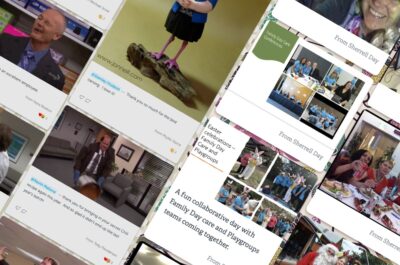Imagine you have just started at a new job, but you haven’t had any training besides a quick tour to your desk and a “Welcome! Go ahead and get started!” That would be fairly terrifying.
This is why onboarding exists, to help employees understand their role, get settled, and more. Generally, onboarding is the process of introducing an employee to an organization/company. Onboarding generally consists of four important parts: orientation, role training, role transition, and ongoing support to ensure that employees are settled. A great onboarding program has many benefits, the main being employee retention.
Read further to find out how to make your company’s onboarding process a great experience for new hires.
The Onboarding Process
The onboarding process contains four important steps: orientation, role training, role transition, and an ongoing support process that ensures the employee is fully settled. Each step has an essential role to the onboarding process and ensures a successful first few months for the new employee.
Orientation
The new hire orientation generally consists of the first few days to the first week, where employees can come to learn about the company, get introduced to HR and understand their benefits, and more. A new hire orientation could include the following:
- Introductions to co-workers/management
- A new-hire lunch provided by the company
- Tour of the facility
- Introduction to the company’s mission and values
- A general overview of benefits
Role Training

Role training is more specific and helps employees get settled and understand their role and what their responsibilities will be. Role training could include the following:
- A meeting with a manager to go over responsibilities
- Training sessions led by a fellow, seasoned employee
- Frequent meetings in the beginning to ensure understanding and to give proper support
Role Transition
Perhaps the employee is getting a new role within the company. In this case, an organization should have a strong role transition plan in place to help ease the transition from role to role.
What is a transition plan? A transition plan is usually implemented when an employee transitions out of their role, and it helps the employee set goals, ensures that tasks and duties are documented, and minimizes risks to programs and projects. A transition plan can include the following:
- Role Responsibilities: Outlines main tasks that need to be taken care of so the workflow isn’t interrupted, or at least has minimal interruptions. It is especially helpful to have the priorities categorized according to their priorities, effort, and timeframe.
- Outstanding Projects: Listing all projects that must be completed and the ones that the employee will complete before leaving is incredibly helpful for workflow. In this section, the current employee can leave detailed notes to help ensure the project is finished in a timely (and correct) manner.
- Deadlines: Along with listing outstanding projects, upcoming deadlines are also essential in a role transition plan. This lets the new employee prioritize what is most important.
- List Of Resources: Finally, a list of resources can be given to the new employee so that they feel supported and have all the information to be successful. This could include notes about clients, key contacts they may need, who to reach out to, etc.
Having a plan for a role transition will create a smoother move from one role to the next and help the company avoid any problems during the transition.
Ongoing
As employees get settled, onboarding can be a continuous process that can last up to a year. Ensuring that employees feel comfortable and ready for their new career will help with employee retention and overall satisfaction. Frequent check-ins from management is a way that companies can ensure their new hires are getting settled in.
4 Amazing Benefits of Onboarding
Onboarding has many benefits, but four main ones include employee retention, clearly-defined roles, a more positive company culture, and a stronger employee experience.
- Employee Retention
Employee retention is a huge benefit that comes from a good onboarding process. In short, onboarding helps employees feel supported and comfortable in their new role, which leads to the employee wanting to stay in that role and at the company.
To learn more about employee retention, check out our blog on “Employee Retention 101”.
- Role Clarity
When an employee understands and feels comfortable in their role, everything runs smoother. Not only does a clear understanding of roles impact employee productivity, but it also can affect the trust between employees, employers, and colleagues. When colleagues are clear in what their roles entail, there is no crossing of wires and everyone has an understanding of what is being asked of them.
- Positive Company Culture
A great onboarding program can also affect company culture. In short, company culture is where a company has a shared set of goals, practices, and a shared belief of what the company is about.
During the onboarding process, new hires learn the company culture so they can carry those lessons into their roles. Without an effective onboarding program, including one that goes over company culture, this moment is lost and new hires won’t be as aware of what the culture is (if there is one).
Want to learn more? Here’s Everything You Need to Know About a Healthy Company Culture from our experts.
- Improved Employee Experience

Finally, another amazing benefit of onboarding is an improved employee experience. This is essential to retention, productivity, and the company’s overall success.
The employee experience is defined as “the culmination of everything an employee hears, sees, feels, and does throughout their time at a job.” Starting an employee off with a positive onboarding experience, where they feel supported in their new role, and giving them proper role clarity is all part of their experience in the company.
What is the Difference Between Onboarding and Orientation?
While onboarding and orientation seem like the same thing, there are distinct differences. Understanding these differences will help your company succeed.
Onboarding is a set of events that enable employees to learn what they need to successfully meet the responsibilities of their new roles.
Orientation on the other hand is simply the initial welcome a company provides to the new hire. Orientation is usually shorter, and onboarding can last up to months depending on what is in the onboarding plan.
Purpose of Onboarding
The main purpose of onboarding is to get an employee fully trained, settled, and feeling comfortable in their new role. Onboarding is also an excellent opportunity to introduce employees to the company culture. During the onboarding process, a new hire starts to:
- Take part in meetings
- Gain knowledge of the specific nature of their new role and responsibilities
- Take on more projects
Purpose of Orientation
As stated, orientation is typically shorter than onboarding, and usually just gives the new hire a brief introduction of the company’s vision/values, and meets new co-workers. During orientation, new hires might also:
- Complete new hire paperwork
- Get a brief understanding of HR and Insurance options
4 Ways To Make Your Onboarding Experience Awesome
Onboarding is essential to the company’s future and success. To ensure that your onboarding process is amazing, here are some tips you can use to ensure your onboarding process is amazing.
Have An Onboarding Liaison

An onboarding liaison can ease the stress on a company during the new hire process. If you have a large batch of new hires, or are a large company that is constantly hiring, an onboarding liaison may be a great fit. An onboarding liaison can help with the following:
- Plan and facilitate orientation and training sessions
- Take employees through the overall duties of their role
- Help employees get set up with the proper technology
- Handle new-hire paperwork and logistics
- Answer any questions that may arise
Provide Resources
Providing plenty of resources (in an organized way) can prevent information overload while still ensuring that employees feel supported. These resources can include HR materials, company culture information, details about their new role, essential contacts, and more. These resources will vary company to company, but giving a new hire the right resources will help them succeed.
Onboarding Gifts
A fun way to make onboarding memorable and positive is with some fun company SWAG. Otherwise known as “Stuff We All Get,” SWAG is a great way to get new hires excited, and give them company-branded gear at the same time. Some common onboarding gifts are:
- Mugs and other kitchenware items
- Wellness kits
- Computer bags
- Shirts
- Self-help books
Buddies For New Hires
Finally, a great way to ensure that the onboarding process runs smoothly and that new hires feel welcomed and supported is through offering a buddy system for new hires. This way, no one feels alone in the process.
There are two ways to do this. First, new hires can be assigned buddies with other new hires so they can go through the process tougher.
Alternatively, new hires can be paired with seasoned co-workers from their new team. The seasoned co-worker can help answer any questions and support the new hire.
How to Make Onboarding Remote Friendly
There are several ways to make onboarding remote friendly. Since the COVID pandemic, there are still many companies who are remote, and many companies (and employees) prefer this.
While the onboarding process may look a little different, it is still an essential step for new hires. To help make onboarding remote friendly and still get all the benefits of the onboarding process, here are some essential remote friendly onboarding tips.
To read more, here are more tips on how to improve the remote onboarding process.
Ensuring Employees Have The Right Tech

If your company is remote, it is likely that your onboarding process needs to be virtual. This means that new hires need to have all the right tech to be successful.
For remote onboarding, an essential initial stage of onboarding needs to be getting new hires proper technology. This may include a work laptop, and any other communication needs (headphones, separate cameras, etc.). Once employees are properly set up, virtual onboarding can begin.
Schedule Time For Connection
A big drawback for remote employees is the lack of connection to their fellow colleagues.
To combat the new employees feeling lonely, scheduling time for connection is vital. Schedule weekly (or daily, bi-weekly, whatever works for your company) video check-ins where cameras are on to facilitate this connection.
For more ideas on how to keep remote teams connected, read our comprehensive guide.
Utilize Remote Friendly Communication Tools
Another way that companies can ensure a great remote onboarding process is by using the correct communication tools. Communication tools like Slack, Asana, and more are great ways to ensure that teams are working efficiently and communicating effectively. A good communication tool also helps new hires feel more comfortable in their roles.
Prevent Information Overload
Finally, preventing information overload is another essential part in the remote onboarding process. One way to do this is to reduce “Zoom fatigue” by breaking information into manageable chunks with a healthy amount of breaks in between.
Giving employees time to decompress after long meetings during the onboarding process is helpful. However, it can also be helpful to use fun “get to know the team” meetings during these breaks, where new hires can meet with their team in a laid-back virtual setting.
Finding The Right Onboarding Tools
Finding the right onboarding tools is another way to ensure that onboarding is successful. There are many tools out there, all with different purposes, so let’s dive in.
Kudoboard
Kudoboard is an awesome tool for businesses to use during the onboarding process. Kudoboard utilizes online virtual cards for many purposes, such as shout-out boards, welcome cards, birthday cards, work anniversary cards, and more.
To utilize Kudoboard during the company’s onboarding process, companies can use welcome boards for the new hires from their team.
Enboarder
Enboarder is a tool that specializes in an experience-driven platform for managers and companies to connect to their new hires. In Enboarder, new hires are able to have personalized onboarding experiences to help them understand new tasks, best practice templates, and more.
Enboarder also integrates with many tools that HR might use (DocuSign, Slack, and more).
Zoom
Of course, Zoom is an excellent video tool for companies to use for more than just virtual meetings. Zoom can also be used for team chats, online whiteboards, email/calendar usage, virtual working spaces, and appointment schedulers.
Asana
Asana is an organizational tool that helps companies with project management. Asana has different features such as timelines to keep track of projects, calendars, goals, forms, automation tools, and more. It’s great to introduce during the onboarding process to help new hires navigate their new role.
Conclusion
Onboarding is an essential step for employees to be successful at a new company. While it may seem like there are many moving parts to onboarding, investing in the right tools and programs will pay off with amazing benefits.
Looking to up-level your onboarding process?
Get new employees started off on the right foot and keep them around longer by welcoming them with a workplace engagement platform.




